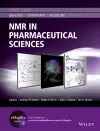
NMR in Pharmaceutical Science
4 contributors - Hardback
£93.60 was £104.00
Dr. John C. Lindon is a professor and senior research investigator in the Division of Computational and Systems Medicine, part of the Department of Surgery and Cancer, Imperial College London. He is also a founder, director of, and a consultant to Metabometrix Ltd, a company spun out of Imperial College to exploit the commercial possibilities of metabolic phenotyping. He is editor in chief of the Encyclopedia of Spectroscopy and Spectrometry and is on the editorial board of several journals. His major research interest is the use of NMR and other analytic methods coupled with multivariate statistics to study biofluids and tissues, a field now termed metabolic phenotyping. George Tranter is a Director of Chiralabs Ltd., a company he co-founded in 2002, focussing on investigative R&D and analysis of materials and phenomena ranging from drug substances and chemicals through to engineering components, industrial processes and consumer products. He obtained his BSc and PhD at the Chemistry Department of King’s College, University of London, UK (1977-83), then joined the Theoretical Chemistry Department of the University of Oxford, specializing in chiral phenomena and optical spectroscopies. From 1987 he held senior R&D positions in the pharmaceutical industry (the Wellcome Foundation and GlaxoWellcome), before returning to academia in 2000. Until 2006 he led the Biospectroscopy Centre of Imperial College London and subsequently was Senior Research Fellow of the Department of Chemistry, University of Oxford, maintaining strong collaborative links with the pharmaceutical and biotechnology industries throughout. He is a recognised authority in chirality, optical & chiroptical spectroscopy and the physicochemical features of drugs and biopharmaceuticals, and a co-inventor of the internationally award-winning rational crystallisation screening technology for pharmaceuticals, CrystalGEM®. He is a named inventor on drug patents, has published widely in the scientific literature, is co-editor of the Encyclopedia of Spectroscopy and Spectrometry, editor of the Separations & Analysis volume of Comprehensive Chirality (Elsevier), has been a member of scientific journal editorial boards and appeared on radio and television programmes in the UK and abroad discussing scientific topics. He has been a member of various scientific advisory panels, a Visiting Fellow of the National Physical Laboratory (UK), and a key partner in collaborations that bring together the biopharmaceutical industry, academia and governmental institutions to investigate and validate biopharmaceutical structure and function. He is a Fellow of the Royal Society of Chemistry, a Chartered Chemist and a Chartered Scientist (Europe). His particular interests are in the rational discovery of new therapeutics, with a passion for the role chirality plays in nature, from the molecular level through to macroscopic structures and beyond. Research and development activities include the generation of novel technologies to help rationalise poorly understood phenomena, particularly using optical spectroscopies coupled with megavariate pattern recognition. He is also an enthusiastic underwater spectroscopist-photographer studying the unusual spectroscopic characteristics of marine creatures. David W. Koppenaal is Chief Technology Officer at the Enviromental Molecular Sciences Center (EMSL) at Pacific Northwest National Laboratory in Richland, WA. Dr. Koppenaal’s research interests include the development of new instrumental and spectroscopic techniques for metallomics applications and the metallomic study of cyanobacterial systems. Dr. Koppenaal was an early proponent of metallomics as a new science discipline, serving as an advocate and speaker on this topic since 2000, organizing the first symposia focused on this topic in the US, and serving as co-chair of the 2nd International Metallomics Symposium (2009). Dr. Koppenaal is well-known for his fundamental science investigations and innovations in atomic mass spectrometry, including the initial development and demonstration of effective reaction cell technology and associated ion molecule reaction approaches for interference reduction in ICPMS. More recently he has developed and applied ultra-high resolution orbital trapping MS techniques to metallomics applications. Dr. Koppenaal has also served as Editorial Board member of JAAS, and as Chair of the Analytical Division of the American Chemical Society. He is a Fellow of the Royal Society of Chemistry, the American Association for the Advancement of Science, and the American Chemical Society.